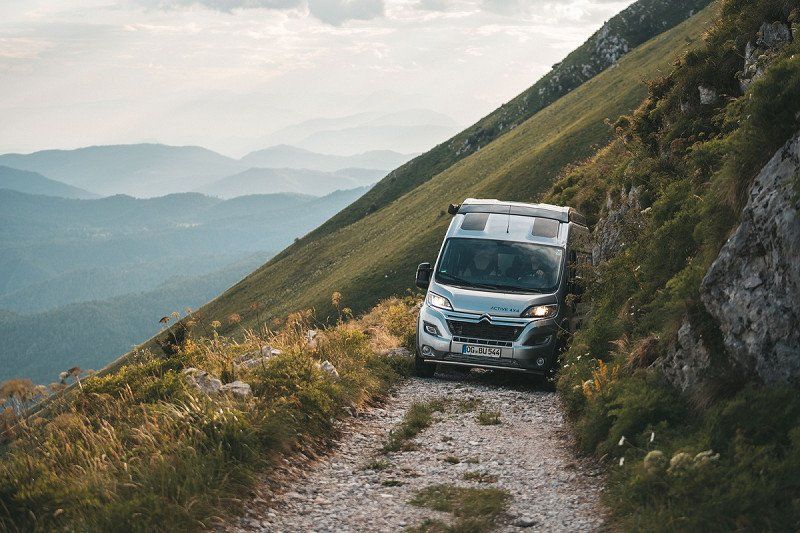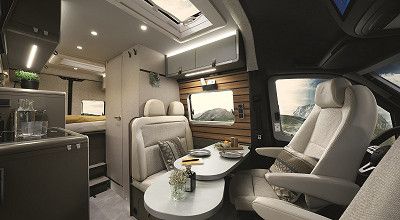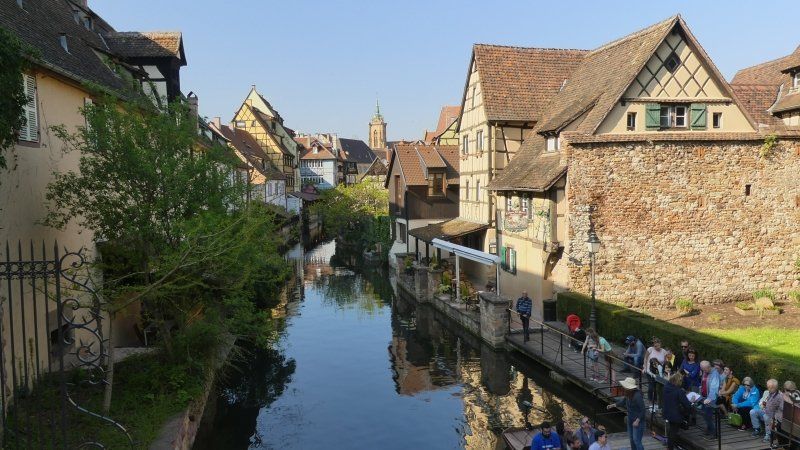The campervan is regarded as the jack of all trades among leisure vehicles: It is a successful combination of motorhome and vehicle suitable for everyday use. Handy enough for the city with plenty of space for shopping and spacious enough for a weekend trip or camping holiday. Freeontour explains the differences to other camping vehicles.
What is the difference between a camper van and a motorhome?
The trend towards camper vans continues unabated. Accordingly, new variants are launched on the market every year as an alternative to semi-integrated, fully integrated and alcove motorhomes. There are several reasons for this: On the one hand, the conversions generally use standard panel vans such as the Fiat Ducato, Ford Transit, Mercedes Sprinter, VW Crafter, Citroën Jumper, Peugeot Boxer, Renault Master or similar transporters as the base vehicle. They therefore score points with crash-tested all-steel bodies, handling and ride comfort similar to that of a passenger car as well as modern driver assistance systems.
On the other hand, campervans, which are more compact than classic motorhomes, are also suitable as an occasional second vehicle for everyday use - for example to go shopping (with the fridge on board) or to take the children to nursery, school or sports in bad weather. Campervans are particularly popular with sporty singles and couples. After all, these camper vans offer enough space to take them and their favourite sports equipment - whether mountain bikes, paddle boards, skis or paragliders - out into nature and stay overnight. What's more, a campervan used for everyday purposes is usually ready for use more quickly for a spontaneous long weekend than a large motorhome that has been parked for a longer period of time.
What features does a camper van usually have?
In principle, you don't need much to feel comfortable in a campervan: Sleeping, cooking, washing, sitting. In the pioneering days of campervans, you would get by with little more than a bench seat that could be converted into a bed, a small washing-up bowl, a spirit cooker and a spade with toilet paper. Today, the basic equipment of a normal campervan usually includes a bench seat with table (supplemented with swivelling cockpit seats depending on the size and model of the campervan), a kitchen module with gas cooker and cool box or refrigerator as well as a complete sanitary facility with toilet and washbasin and usually also a shower.
At least one sleeping area for two people is also standard in a camper van. This is usually found in the rear of the vehicle in the form of a double bed. Depending on the vehicle type, additional beds are available on the convertible seating area or under the roof. A distinction must be made between different roof types: Campervans are available with a normal flat roof, pop-up (sleeping) roof, high roof or even a small alcove. The latter are panel vans with noses above the cockpit that resemble an inverted boat bow. Depending on the height and type, they offer sufficient headroom, ample storage space or even a double bed.
How many features should a camper van have?
Just how many comfort features a camper van needs depends not only on the number of inhabitants, but also on their requirements and preferred holiday regions: In the far north, an effective diesel or gas heating system is essential so that you are not reliant on campsites. If you prefer to use the infrastructure at campsites or pitches and travel south, then full on-board bathroom facilities are less important. And if you’ll be using the vehicle mostly for weekend sports in summer, then you may find an outside shower is sufficient. On the other hand, restaurant tourists or city tourists may decide not to bother with a proper kitchenette.
What role does weight play in the campervan?
As with all other motorhome classes, the question of transport capacity and weight also arises with campervans and panel vans. The answer depends on the type of holidaymaker you are and the extent of your leisure activities, and primarily concerns the storage capacity and payload. The value for the latter results from the difference between the ‘mass of the vehicle in running order’ (column G in the registration certificate) and the ‘technically permissible maximum laden mass’ (column F.1). In the first instance this is theoretical because any ordered optional extras or those purchased from a dealer must also be included in the calculation, e.g. canopy, bicycle rack, etc.
How long should a campervan be?
A camper van of 5.99 metres long is sufficient for a 2 person holiday. Parents with small children should consider a larger camper van (maximum length 7.00 metres) – or even better consider a semi-integrated, integrated or alcove motorhome for more convenience.



































